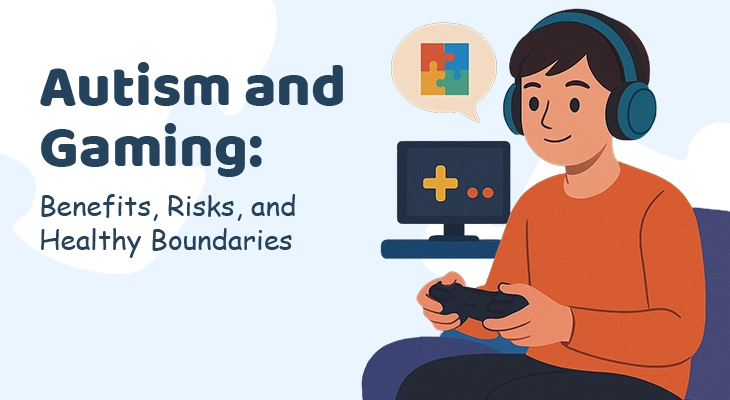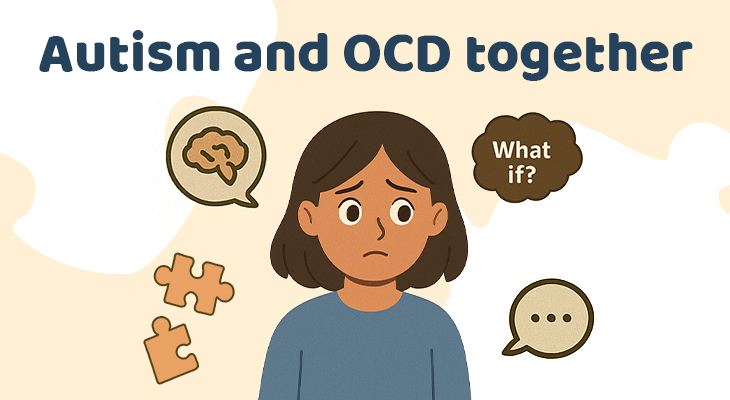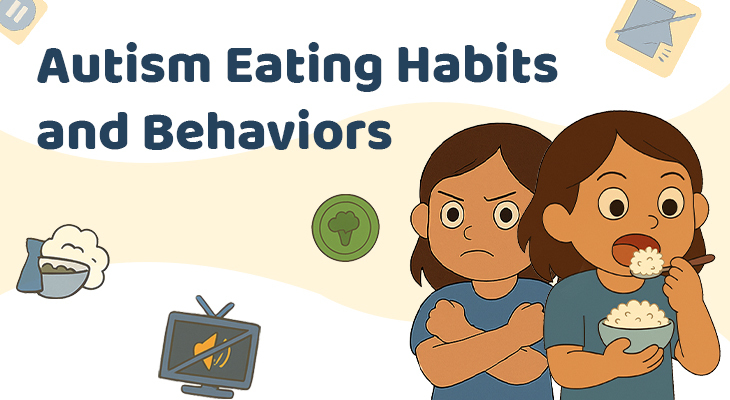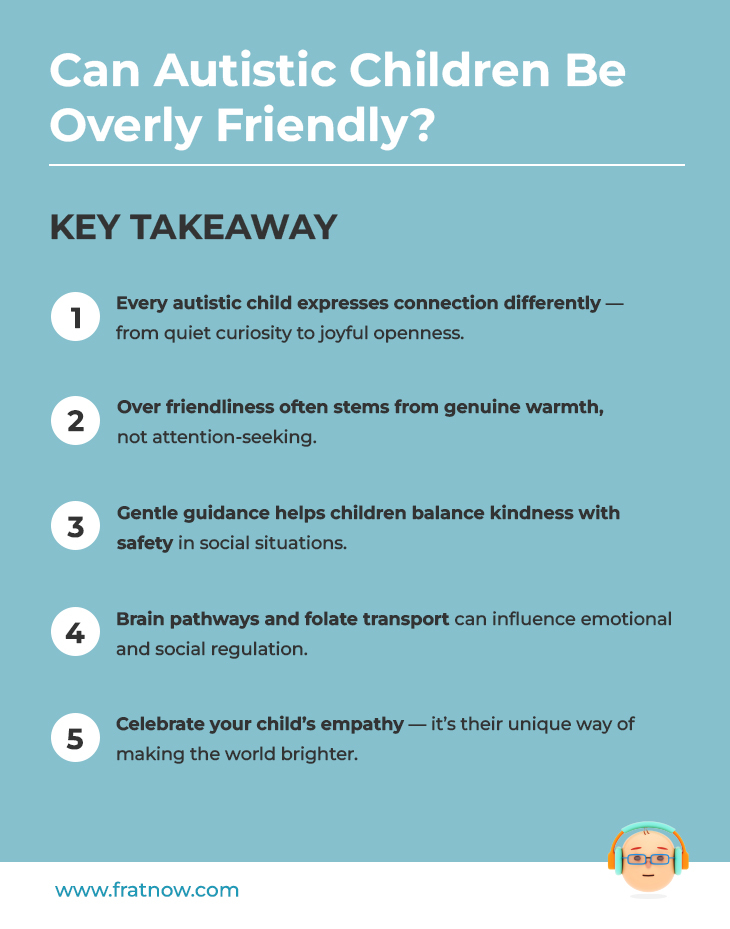
Download Download & share this Knowledge card in your network [Free Download]
Introduction
Hi, I’m Aiden. My brain doesn’t always follow the same map as everyone else’s — because I’m autistic.
People sometimes assume children like me prefer quiet corners or alone time. But the truth is, I love people. I want to wave at everyone I meet, share my latest dinosaur fact, or tell a stranger about my favorite song.
My parents call this being “overly friendly.” But from my point of view, I’m just trying to connect — even if I don’t always understand when or how it’s okay.
So, why do some autistic children seem overly friendly? What’s really happening in their brains? And how can families help these children build safe, happy friendships without dimming their natural warmth?
Understanding Social Behavior in Autism
Autism Spectrum Disorder (ASD) affects how people interpret cues, communicate, and respond socially. While it’s often linked with shyness or social withdrawal, not every autistic child fits that image.
Some are incredibly outgoing — greeting everyone with excitement, asking deeply personal questions, or hugging strangers without hesitation.
This behavior doesn’t mean they’re unaware of social rules; it simply reflects that their social reciprocity — the natural rhythm of give-and-take in human interaction — operates differently.
An autistic child might view friendliness itself as connection, without realizing that others have invisible boundaries about space, tone, or timing.
Why Some Autistic Children Appear Overly Friendly
Every autistic brain processes the world in its own way. When friendliness feels “too much,” there are often several interwoven factors at play:
- Difficulty Reading Social Cues
They may not immediately recognize subtle signals like hesitation or discomfort, so they continue engaging enthusiastically. - Impulsivity or Reduced Inhibition
Some children act on the moment — waving, talking, or oversharing — without pausing to gauge what’s socially appropriate. - Sensory-Seeking Behavior
Laughter, physical closeness, or energetic play can be soothing. What looks like “too friendly” may actually be a form of sensory regulation. - Modeling Social Scripts
Many autistic children learn by imitation. They might apply a friendly script (“Hi! You’re my friend now!”) to everyone they meet, even when the context changes. - Overlap with Other Conditions
Conditions like ADHD or anxiety can further lower inhibition or intensify emotional responses, making social control more difficult.
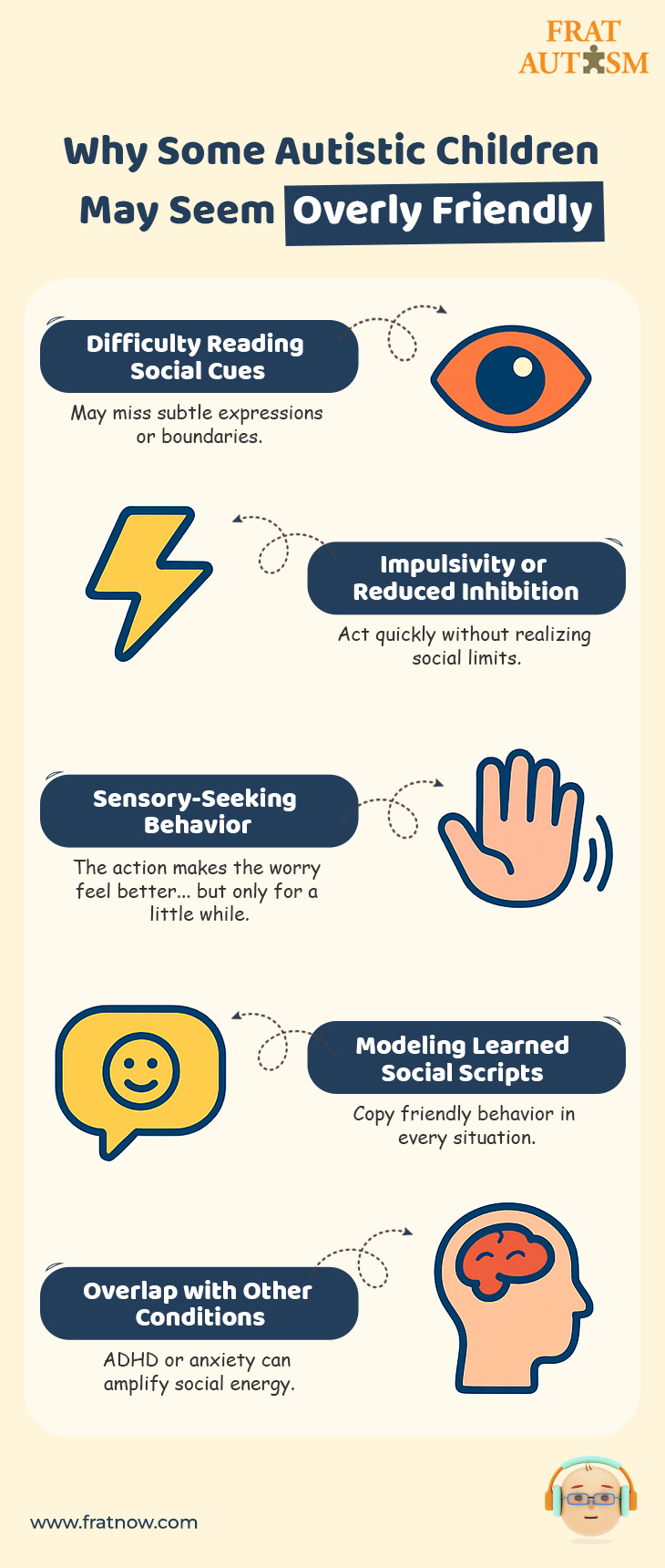
Download Download & share this infograph card in your network [Free Download]
The Science Behind Social Inhibition
At the neurological level, social behavior is governed by networks that regulate inhibition, attention, and empathy. When these systems process information differently, a child may act impulsively or overlook unspoken social boundaries — not out of defiance, but of a genuine neurobiological difference.
Emerging studies have begun to explore how brain metabolism and nutrient transport influence social-emotional regulation. For instance, disruptions in the folate transport system — particularly through folate receptor autoantibodies (FRAAs) — may interfere with how the brain uses folate, a critical nutrient for communication between neurons.
This imbalance can subtly affect attention, mood, and social interpretation. To better understand these biological influences, clinicians sometimes use FRAT® testing, which identifies FRAAs and helps clarify potential contributors to developmental and behavioral variations in autism.
What “Overfriendliness” Really Means
When an autistic child seems overly friendly, it’s rarely a matter of “too much” — it’s a reflection of an authentic connection.
It often represents:
- Emotional honesty: They express what they feel without filters.
- Social curiosity: They’re deeply interested in people and eager to engage.
- Unfiltered trust: Their openness is a sign of innocence, not defiance.
Rather than discouraging this, caregivers can gently guide the child toward understanding safety, consent, and social balance — turning overfriendliness into an opportunity for learning rather than correction.
Supporting Social Growth
The goal isn’t to quiet a child’s enthusiasm, but to help them understand how and when to express it safely. This requires teaching the “hidden curriculum” of social rules — those unspoken boundaries most people learn naturally but autistic children often need explained explicitly.
1. Use Social Stories and Scripts
Originally developed by Carol Gray, social stories are personalized narratives that explain a social situation and appropriate responses. They’re particularly helpful for autistic children who thrive on structure and predictability.
How to Use Them:
- Greeting & Farewell Scripts: Create short, consistent phrases such as “Hi, I’m Sam! What do you like to play?” to open conversations naturally.
- Exit Strategies: Teach polite ways to end interactions like, “It was great talking to you — I’m going to play now.”
- Perspective-Taking Stories: Explain that if a peer walks away, it doesn’t mean rejection — it might simply mean they need space.
2. Teach Personal Space and Body Boundaries
Spatial awareness can be abstract, so visual tools work best.
Try the “Hula Hoop Rule” — use a hoop or tape to show personal space. Ask, “Am I in my hoop? Is my friend in theirs?” It gives a physical sense of distance.
Also, practice reading non-verbal cues like crossed arms or turned bodies as signs to pause or step back.
Finally, clarify safe touch versus unsafe touch in simple, concrete terms — high-fives and handshakes with familiar people are safe; hugging strangers is not.
3. Encourage Reciprocity and Turn-Taking
Over friendliness can sometimes feel one-sided when a child talks endlessly about their favorite topic.
To balance that:
- Teach the “Question Rule” — for every statement they make, they ask one back (“I love trains! What’s your favorite vehicle?”).
- Use a talking object (like a ball) to visualize taking turns.
- Encourage validation before self-expression (“You like soccer? That’s awesome — I play too!”).
This helps conversations feel mutual and rewarding for both sides.
4. Practice in Low-Stress Settings
Social skills develop best through calm, structured repetition.
Set aside a few minutes daily for role-playing greetings or short conversations. Record these and review them together. Point out moments that went well — “See how your friend smiled when you waited for her turn? That was great listening!”
Positive feedback helps children generalize the behavior naturally in real-world settings.
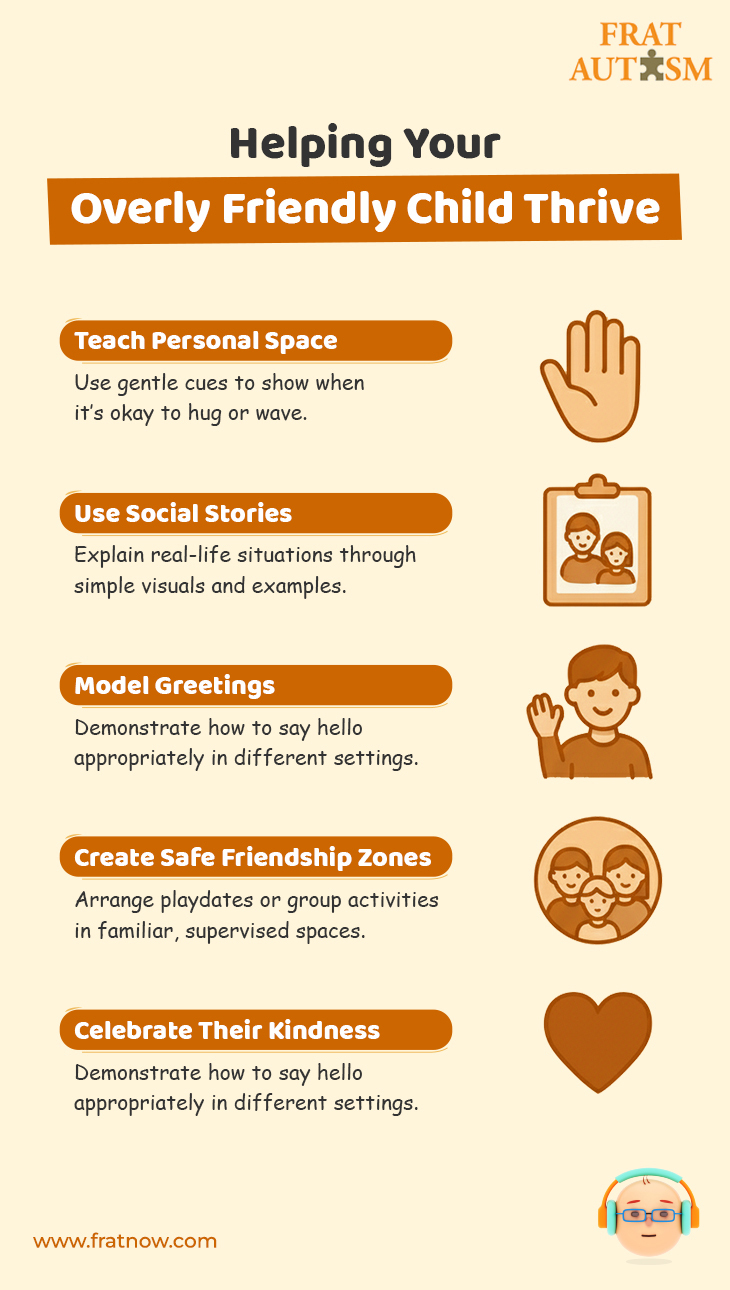
Download Download & share this infograph card in your network [Free Download]
When to Seek Professional Support
If your child’s friendliness leads to risky behavior, repeated social rejection, or emotional distress, it may be worth consulting a developmental pediatrician, psychologist, or occupational therapist.
They can assess for co-occurring factors such as ADHD or anxiety and offer targeted interventions. In some cases, neurological or biochemical testing, including FRAA screening via FRAT®, can help uncover biological contributors that influence social-emotional regulation.
Conclusion
Over friendliness in autism isn’t a flaw — it’s a reflection of the child’s innate desire to connect.
When guided with patience, visual tools, and clear communication, that same friendliness becomes a bridge to meaningful, safe relationships.
By understanding the why behind their behavior — both emotionally and neurologically — we can nurture their openness without fear, ensuring that their warmth continues to shine in ways that are both joyful and secure.
FRAT® Test - Key Facts To Know
Of the 20,000+ individuals tested with the FRAT® test, a significant percentage showed positive results, indicating the presence of Folate Receptor Autoantibodies. Supplementation with alternative treatments like folinic acid has demonstrated improvements in quality of life for many of these individuals.
A FRAT® user’s TikTok video, sharing her child’s positive transformation following a positive FRAT® test result, went viral. Since its posting, the video has garnered an impressive 800K views, 79K likes, 27K shares, 33K bookmarks, and over 3K comments. Watch the video below:
@kyra2532 LIFE CHANGING updates for children with autism. #autismmom #childwithautism #autismresearch #autismfamily ♬ original sound - Kyra
Note: This video is only available in
regions where TikTok is available.
Over the years, more than 1400 physicians have been prescribing the FRAT® Test, underscoring its growing recognition as a valuable diagnostic tool.
Here’s what Maxwell (Parent to an autistic child) has to say about the FRAT® test:

MAXWELL M.

